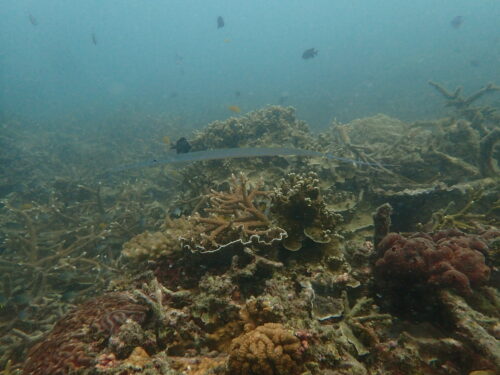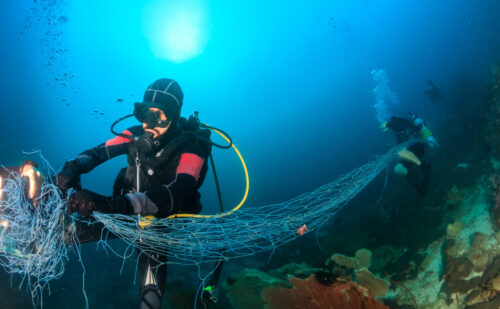How to “Read” a Reef’s Health: Becoming the Eyes of the Ocean
As scuba divers, we are in a unique position. We are among the few who get to regularly visit one of the most critical ecosystems on the planet. This gives us not just a privilege, but a responsibility: to be observers, to be sentinels, and to be the eyes of the ocean.
This final article in Amadive’s Marine Ecology series will give you the tools to do just that. We will guide you on how to “read” the signs of a reef’s health, distinguishing between a thriving, vibrant ecosystem and one that is crying for help. In this way, every one of your dives can become a meaningful contribution to science and conservation.

Signs of a Healthy, Resilient Reef (The Good)
A healthy reef is more than just “a lot of coral.” It’s a balanced and diverse system.
- 1. High Live Coral Cover:
- What to look for: A large percentage of the hard surfaces (rock) is covered by living coral colonies, not bare rock or algae.
- Why it matters: This indicates that conditions (temperature, water quality) are favorable for coral growth, and they are winning the competition for space against algae.
- 2. High Biodiversity:
- What to look for: You see many different types of coral (hard, soft, branching, boulder, fans) and many different species of fish of many different sizes (from juveniles to mature adults).
- Why it matters: Diversity is an indicator of resilience. A diverse ecosystem is more likely to withstand disease or environmental shocks than one dominated by only a few species.
- 3. Presence of Key Species:
- What to look for: A healthy population of herbivores (parrotfish, surgeonfish) are actively “gardening” the reef. You also see the presence of predators at various levels (groupers, snappers, and ideally, sharks).
- Why it matters: This shows that the food web is functioning in a balanced way.
- 4. Little Evidence of Disease or Damage:
- What to look for: The coral colonies look intact and brightly colored, without many broken fragments from anchors or human activity.
The Warning Signs of a Reef in Distress (The Bad)

Learn to recognize these red flags.
- 1. Coral Bleaching:
- What to look for: Coral colonies that have turned stark, bone-white.
- The cause: This is a stress response, usually to elevated sea temperatures. The coral has expelled its symbiotic algae (zooxanthellae). A bleached coral is not yet dead, but it is starving and highly vulnerable.
- 2. Algal Overgrowth:
- What to look for: The reef surface is covered in a thick, fuzzy carpet of algae, often dark green, brown, or red.
- The cause: This is a classic sign of imbalance, usually caused by nutrient pollution (from sewage) and/or the overfishing of herbivorous fish.
- 3. Presence of Disease:
- What to look for: Search for unusual signs on coral surfaces, like white bands, black bands, or other spots of dead tissue.
- 4. Debris and “Ghost Nets”:
- What to look for: The presence of man-made trash, plastic, and especially discarded fishing gear like nets, which continue to “ghost fish,” trapping and killing marine life for years.
Your Role: From Diver to Citizen Scientist
Your knowledge can make a difference.
- Take Action:
- Log and Photograph: Note what you see in your dive log. Take photos of unusual signs (like disease or bleaching) with information on the location and date.
- Report Debris: Participate in the PADI AWARE’s Dive Against Debris® program. Every time you remove trash from underwater, report the data. Your data contributes to a global map that helps scientists and policymakers understand the scale of the problem.
- Share Responsibly: Share your images and knowledge to raise awareness among others.

Conclusion: Your Eyes Matter
Every dive is a “health check-up” for a small patch of the ocean. By learning to read the signs, you are no longer a passive bystander. You become a conscious observer, a record-keeper, and a voice for a world that cannot speak for itself. Your eyes, multiplied by millions of other divers, are one of the most powerful ocean monitoring tools we have.
